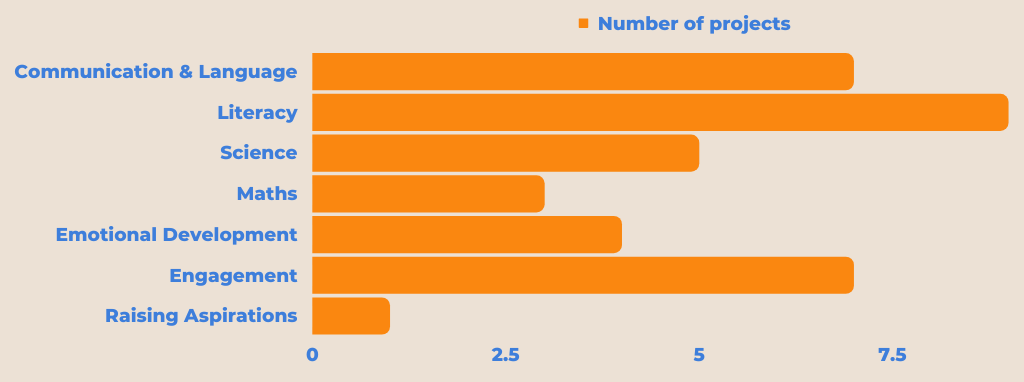
Bridging the Gap
Helping children who need extra support at school to thrive when they move from primary to secondary.
Remember getting ready to start secondary school? Daunting, wasn’t it?
Now imagine making the move when you’ve been struggling with your work and feeling left behind – maybe without space to study at home or books to read.
The fact that so many children from low income homes in the North East fall behind during secondary school, and then do not leave school with good GCSEs, is a great concern of mine. I look forward to supporting SHINE’s work in this area.
Left out
In the North of England, many disadvantaged children who don’t do well at primary school start secondary school feeling confused and isolated. They quickly fall further behind in the first few years of secondary and the gap between their achievement and that of better-off children grows each following year1.
These children often don’t have the opportunity to catch up with their classmates at the start of secondary school and adjust to the changes in the curriculum. Navigating the new environment, making friends and building relationships with lots of new teachers can seem even more overwhelming for children if they’re falling behind in lessons. Busy teachers often can’t prioritise them because schools are focused on achievement at GCSE level. Also, parents may not have the skills, resources or confidence to support children at home2.
Alongside the impact on achievement, the pressures of secondary school can also have a big impact on disadvantaged children’s mental health and wellbeing. Some children finding it hard to cope can get stuck in patterns of challenging behaviours, such as being angry or argumentative3. These children often find it difficult to continue engaging with school, and it can lead to attendance issues or even exclusion. In fact, research has shown that disadvantaged children are three times more likely than better of children to be excluded from school4.
Many leave school without good qualifications. In fact, only 34% of disadvantaged children in the North of England achieve five good GCSEs, compared to 48% in London5. A high proportion also end up not in education, employment or training after they leave secondary school. This is as much as a quarter of disadvantaged children in the North East of England6.
The pressures of secondary school have a big impact on disadvantaged children’s mental health and wellbeing. Some children get stuck in patterns of challenging behaviours and risk being excluded. Research has shown that disadvantaged children are three times more likely to be excluded from school5. Also, many of these children feel so isolated they don’t go to school at all. In fact, the absence rate for disadvantaged children is more than twice the rate for better off children6.
All parents want the best for their children. And schools across the North of England are working hard to support low achievers as they move to secondary school. However, if further action isn’t taken to help disadvantaged children, their potential will continue to be wasted.
What works?
- Building achievement in maths, English and/or science in the first few years of secondary school.
- Establishing better ongoing communication between primary and secondary school teachers to make sure there is a consistent approach to teaching as children move between schools.
- Making sure that schools engage parents and carers as equal partners in their child’s learning during the move from primary to secondary school.
- Improving how information and practice is shared between primary and secondary schools.
- Helping schools develop more supportive, holistic practices for children during the move from primary to secondary school to improve learning and reduce exclusions7.
Bridging the Gap project outcomes
SHINE currently funds Bridging the Gap projects across the North of England which aim to improve outcomes in a number of areas. The full range of outcomes is detailed in the chart below. Click the image for a more detailed breakdown.
Bridging the Gap project activities
In order to achieve these outcomes, our current Bridging the Gap programmes incorporate several elements, which vary from project to project. These are summarised below. Click the image for a more detailed breakdown.
What funding do we offer?
We provide funding to help schools, charities and other organisations develop projects that can build on the evidence of what works in supporting children and parents in this phase. We’re committed to sharing our learning with like-minded organisations, so that together we can help more disadvantaged children to thrive during the move from primary to secondary school.
References
- EPI, Closing the Gap: Trends in Educational Attainment and Disadvantage, 2019
- Scottish Government, Primary to secondary school transitions: systematic literature review, 2019
- https://www.theguardian.com/uk-news/2016/dec/05/london-south-east-children-top-universities-schools-north-england
- University College London, NEET Young People and Training for Work: Learning on the Margins, 2011
- https://www.teachfirst.org.uk/inequality-education
- Department for Education, Pupil absence in schools in England: 2016 to 2017
- Scottish Government, Primary to secondary school transitions: systematic literature review, 2019


